
Winter squashes make the most delicious pies. True or false?
If you answered true, you most certainly love squash, and chances are great that you may even have some giant fruits growing in your garden.
Or perhaps it is your dream to grow hundreds of them, or to be the gardener with the prize-winning one… Either way, growing squashes is a fruitful ambition!
Winter squashes to grow in your garden
Unlike summer squashes that are harvested in the hottest months, think an overabundance of zucchini, winter squashes are harvested later in the season.
And they may take 80-110 days to reach maturity, which makes for a long- season plant and a great gardening commitment.
Rest assured, growing winter squashes is totally worth the effort, as you can keep them nearly all winter long, if only your storage area is up to the task.
In late summer/early autumn, winter squashes begin to ripen and their skins turn hard, making them ready for storage.
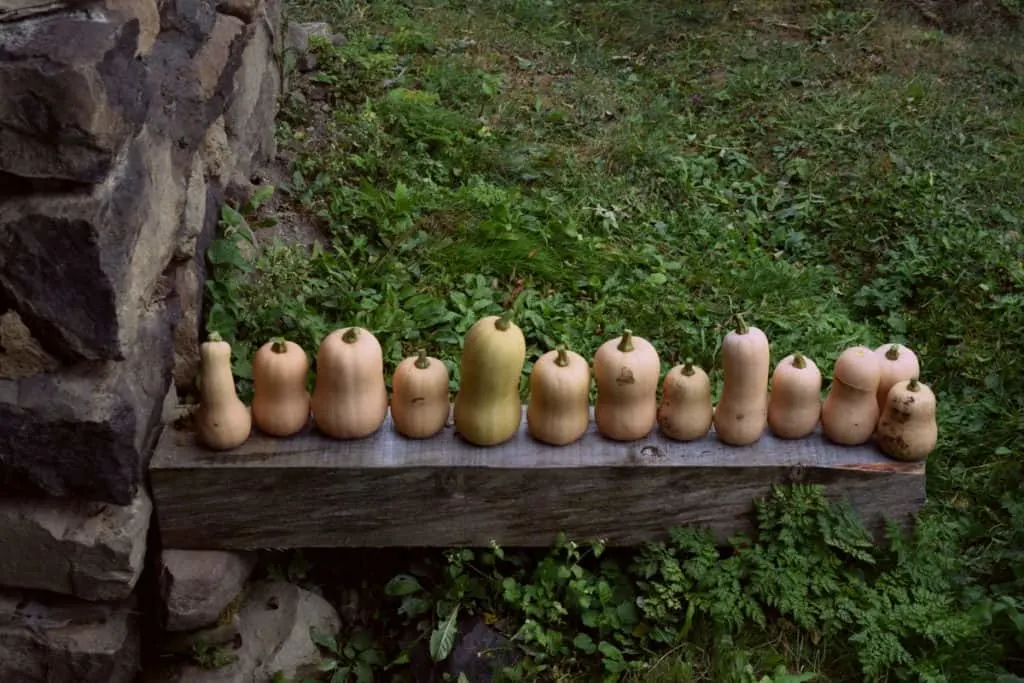
The trick to harvesting is to wait as long as you can into September and October, making sure to harvest always before the first frost.
Be certain to use a knife, or a pair of pruners, to cut the stem, leaving an inch or two on the squash. Never rip it, as it can easily break into the flesh of the squash, making it a lot more perishable.
Winter squashes come in all shapes and colors:
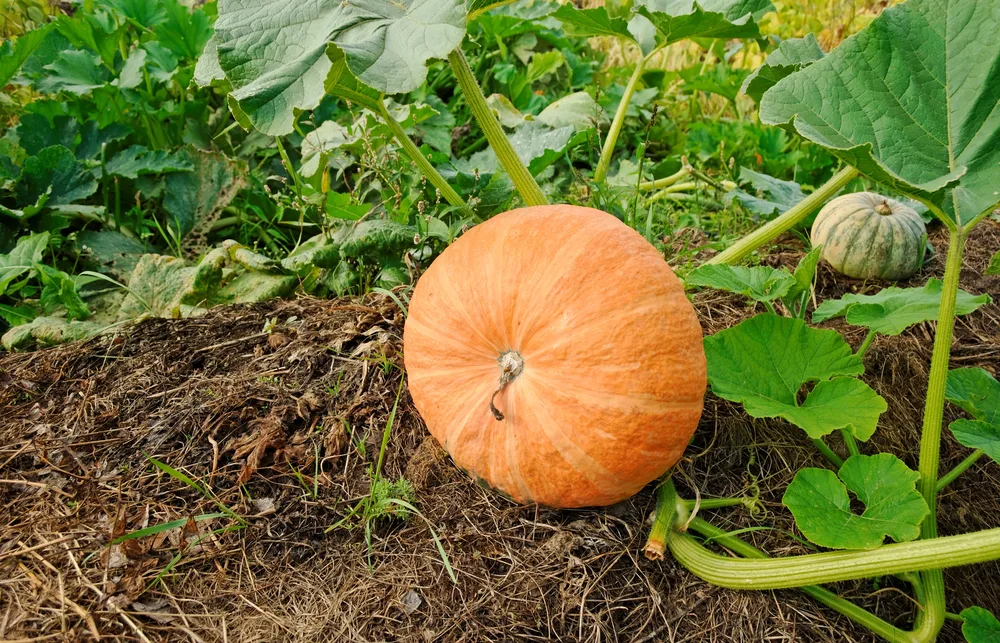
- Acorn squash
- Banana squash
- Butternut squash
- Delicate squash
- Hubbard squash
- Pumpkin
- Spaghetti squash
- Turban
Squashes can rule the garden if they get out of hand, so make sure you know what you are planting from the beginning. Some winter squashes can be in excess of 40 lbs. and grow a few feet or more in diameter. Make sure they have plenty of room and sufficient mulch beneath them!
When growing squash, it’s important to learn how to grow them vertically. Here’s our guide to trellising winter squash to yield more in much less space.
Curing winter squash
To cure squash for a long storage time, you’ll first want to harvest them with stems intact.
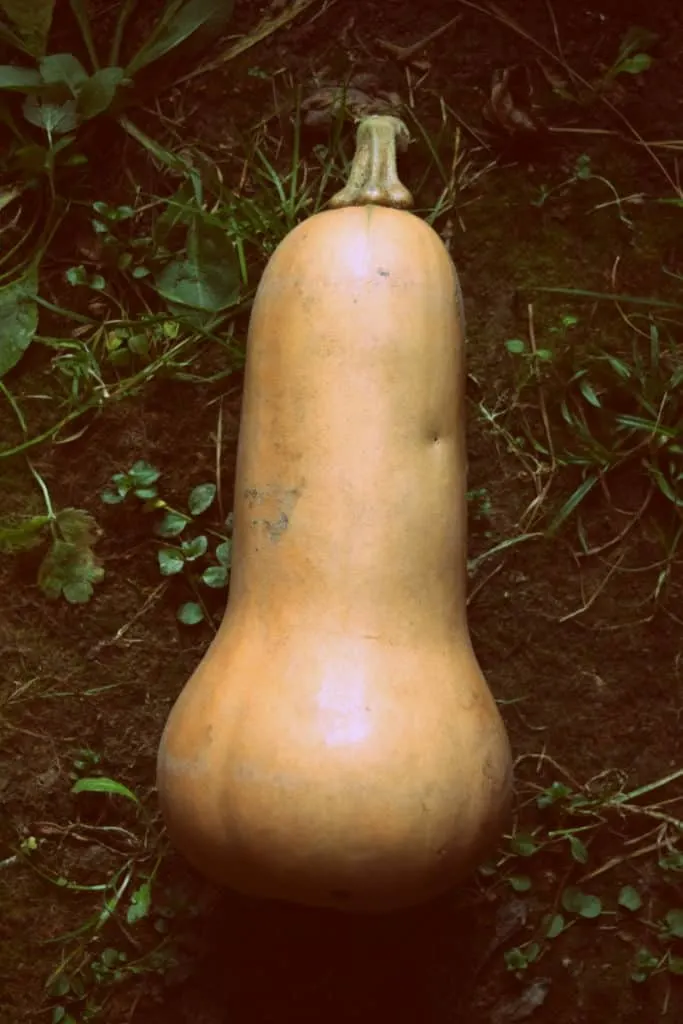
At the same time, you will also need to check for signs of damage to the skin. If there are cuts or bruises, the squash will not keep very long before turning moldy. In that case, it is better to eat them right away, or to devise a storage solution that allows them to be up front and center, among the first to be consumed.
Curing, is simply a form of drying, which encourages excess moisture to evaporate.
The end result is that the natural sugars become concentrated as the skin (rind) of the squash becomes harder. The tough outer layer which forms, helps to preserve the squash as the temperatures drop, just as it slows respiration.
As you bring the squashes closer to the storage space, and further from the garden, you’ll want to provide a dry area while the fruits are curing. This could be on the porch, in a greenhouse, under an awning, anywhere protected from rain.
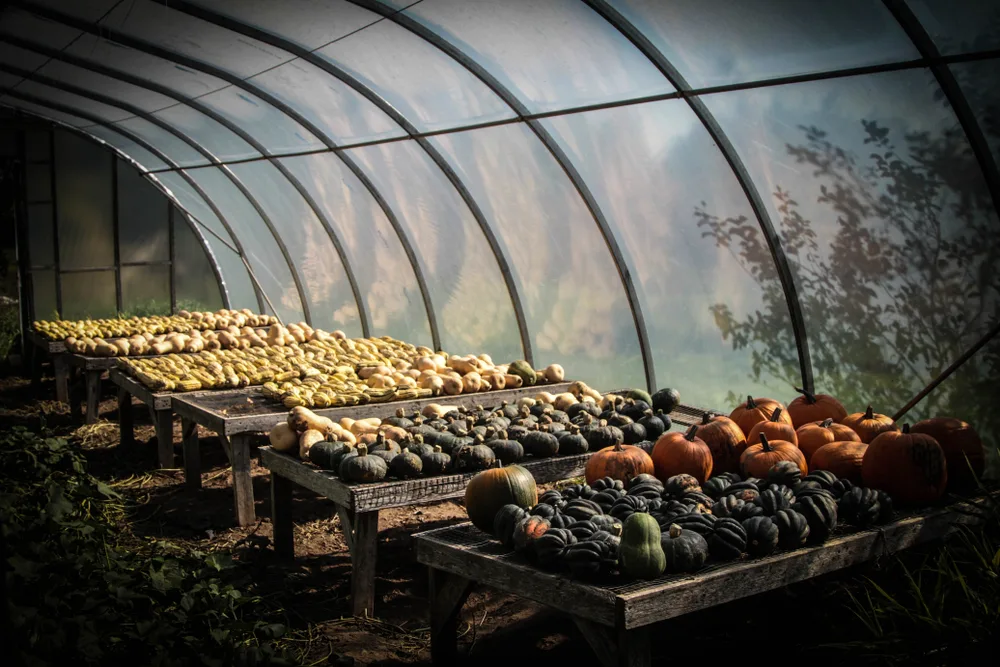
If they are set on a table or the ground, be sure to rotate them daily. If they are sitting on a mesh frame, there is no reason to intervene. Though you will want them to sit for 10-14 days until they are “hardened off”.
In our experience, it is best to brush any clumps of dirt off the skin, but do not wash them. Leave that natural bloom, just as on eggs.
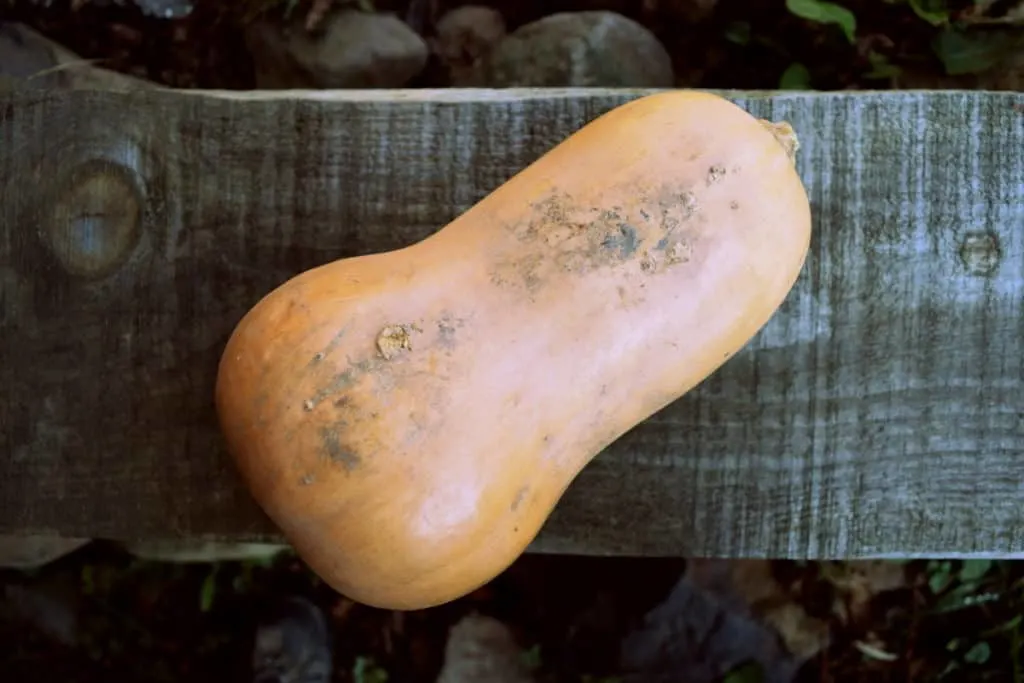
Circulation, dryness and patience are key to long-term storage success.
A general rule of thumb: the larger the fruits, the longer they will take to cure.
Storing winter squash and pumpkins
After your winter squashes have been sun-cured and their skins are hardened, you will need to find a place to store them.
Ideally, this would be in a dark, dry, well-ventilated space with temperatures between 50° and 55° F, with a relative humidity of 50-70%.
But we don’t all have ideal storage conditions, and sometimes we just have to work with what we have.
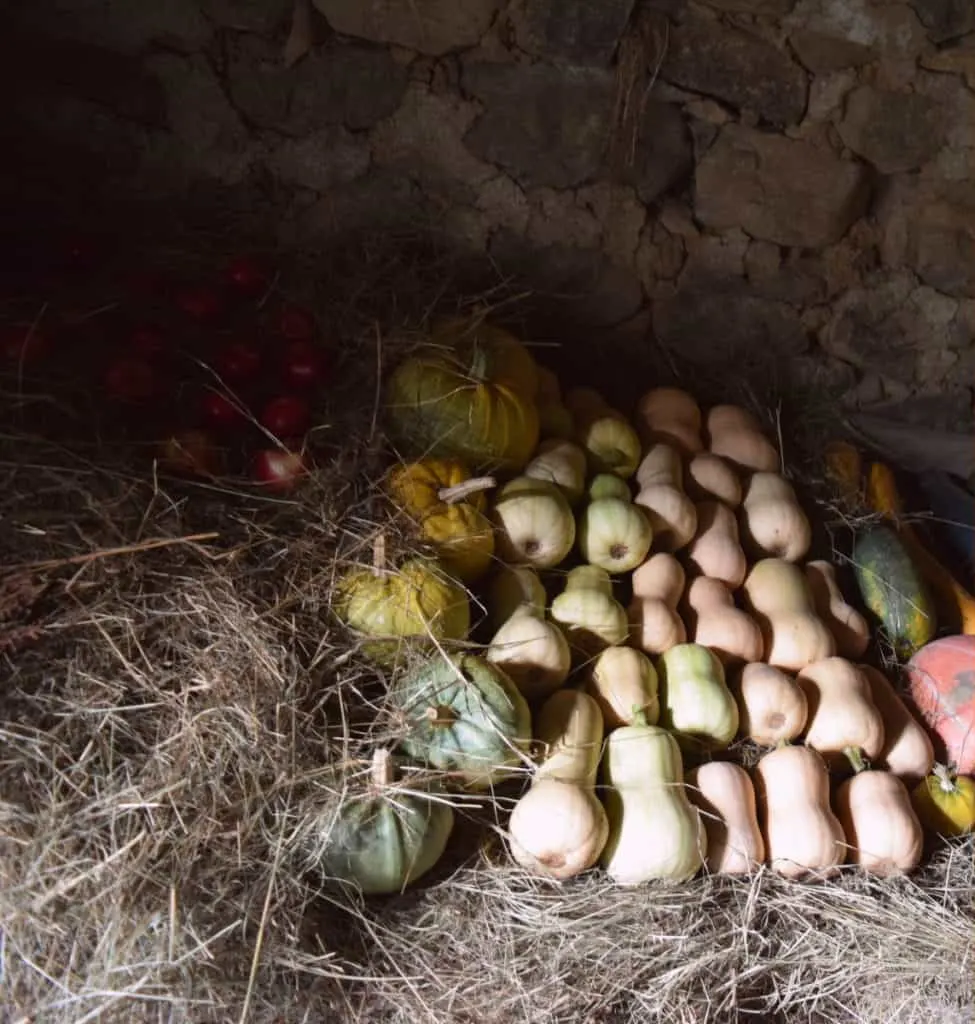
A root cellar is among the best ways to store winter crops. If you don’t have that, wooden crates also work well in the garage, provided that the squashes are covered well with hay or straw, with insulation layers in between the squashes too.
You’ll also note that while a single layer of squash works well for storage, you can also double stack them, with a buffer of organic material separating the layers.
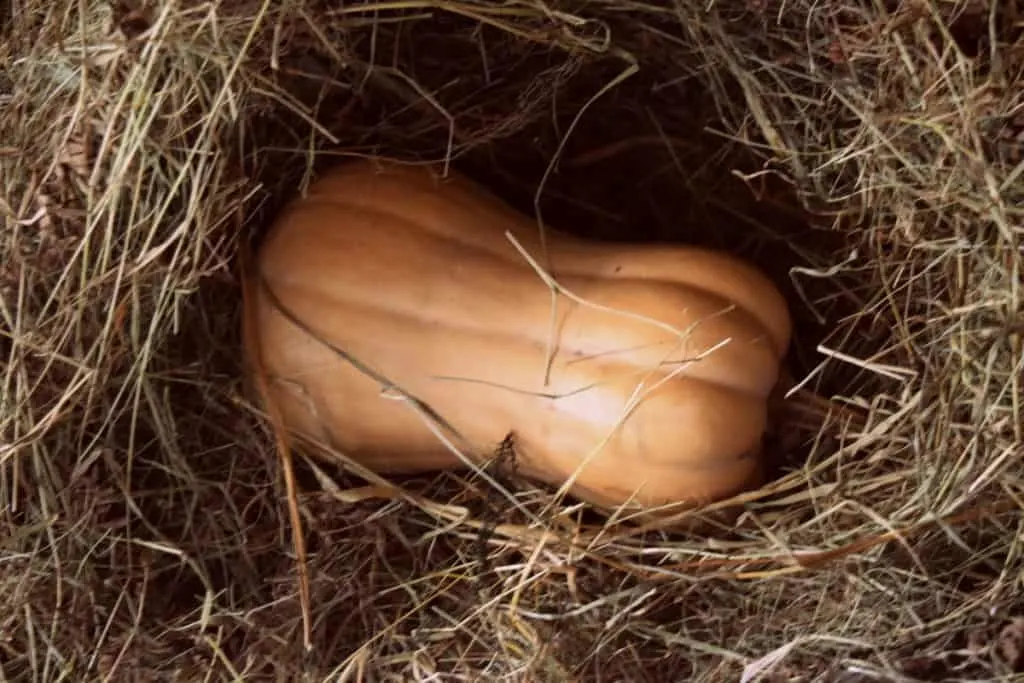
For long term storage, make sure that the squashes do not touch! As this will spread rot, should you not get around to eating them in time.
How long will squash last in storage?
In general, most squashes will last for 3-5 months. Those with a thicker and harder rind will bear the cold winter better.
Just make sure to keep an eye on them all as you grab the next in line, always looking out for signs of rot. If you have more pumpkins and squash than you can handle, consider giving them as gifts to fellow humans, chickens or pigs – whoever resides on the homestead.
On the off chance that they do rot, toss them straight in the compost pile.
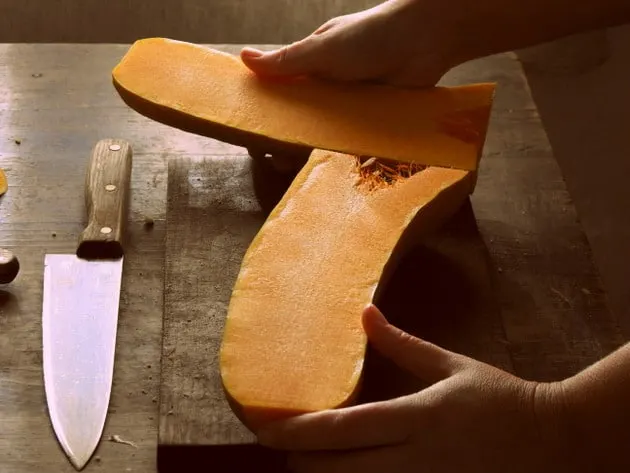
Whenever you are ready to open that pumpkin, or butternut squash, to make a winter pie or hearty stew – don’t forget to roast the seeds or save them to grow more squash next year!
And if you need any inspiration for ways to use your pumpkins, look no further than Tracey’s roundup of 22 delicious pumpkin recipes that go way beyond pie here.
If you are so inspired and already getting prepared (mentally and physically) for the next season of gardening, now is the time to read more about summer and winter squashes.
What 25 exciting types of squashes will you be growing in your garden next year?
Read Next: 5 Ways To Store Potatoes So They Last All Winter

Get the famous Rural Sprout newsletter delivered to your inbox.
Including Sunday ramblings from our editor, Tracey, as well as “What’s Up Wednesday” our roundup of what’s in season and new article updates and alerts.

